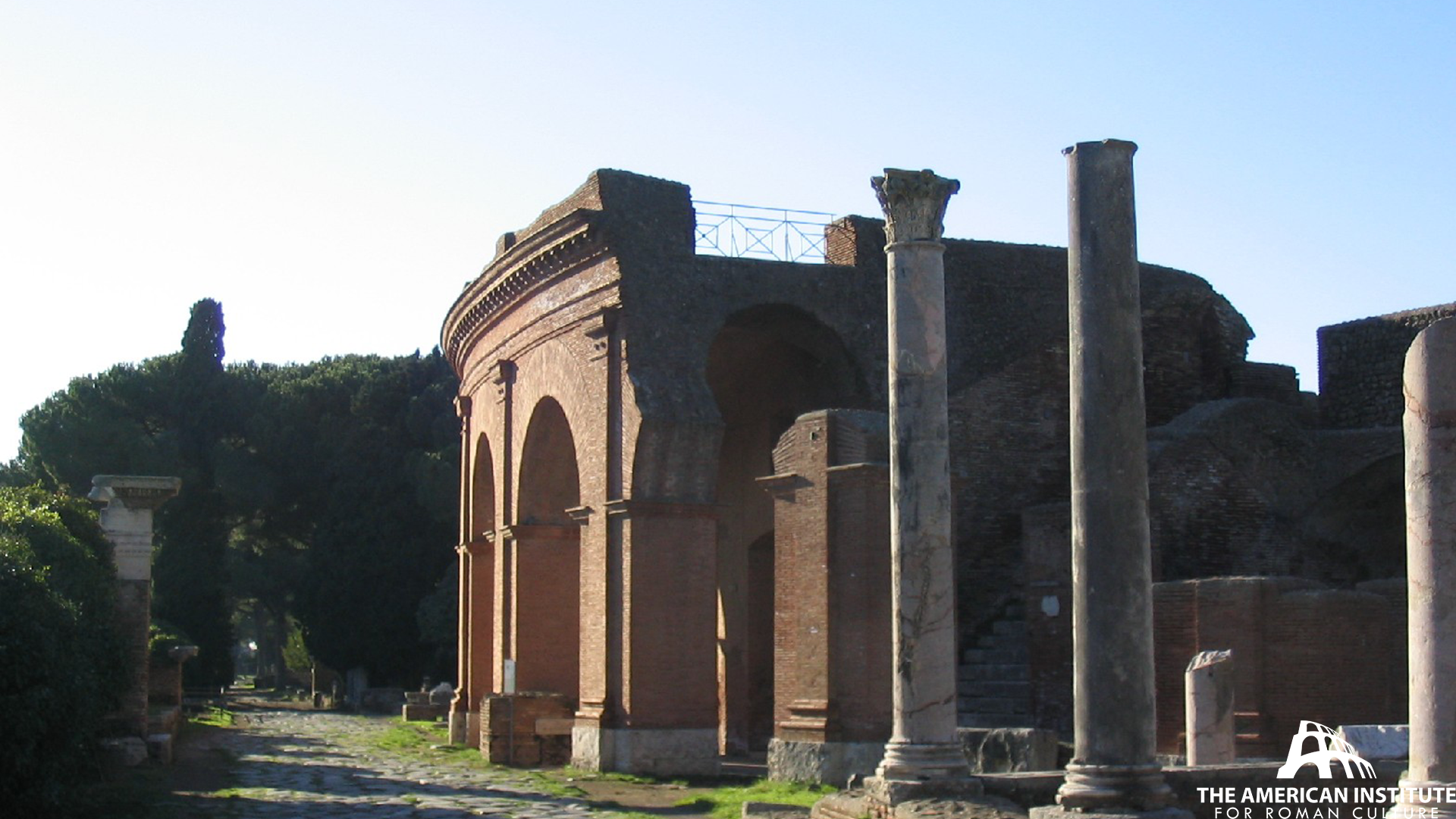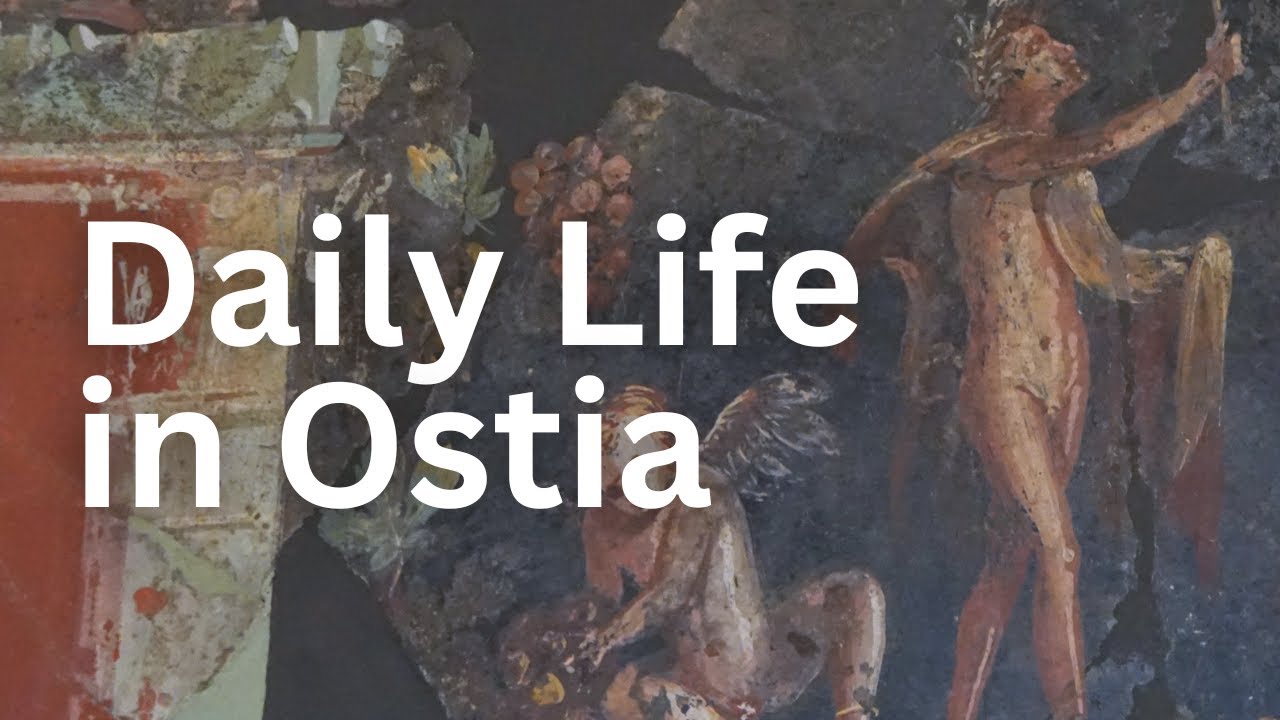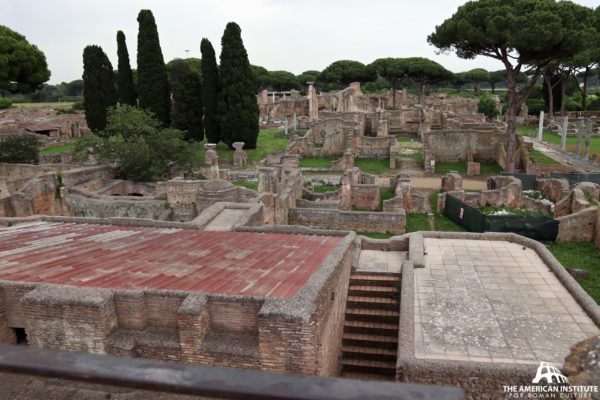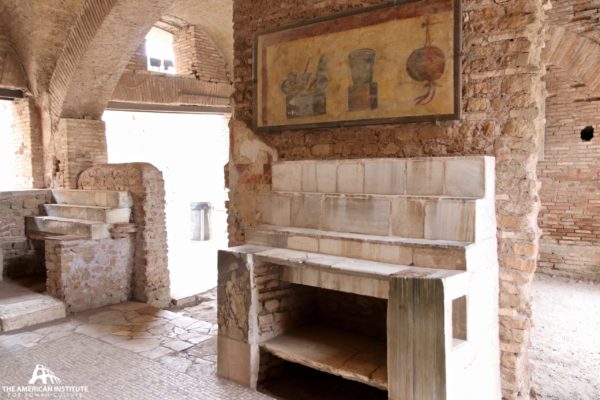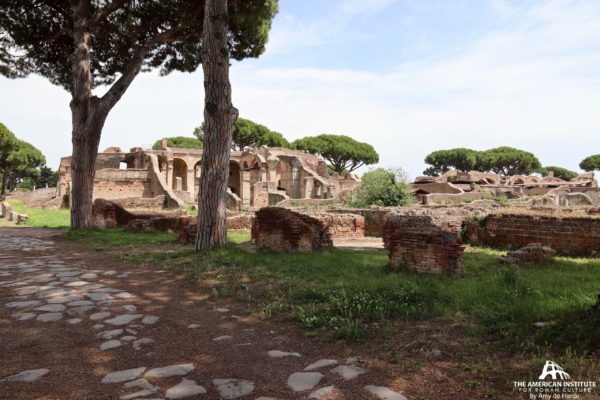Watch our video overview:
Ostia Antica was a bustling city. Daily life for the city’s population involved all the activities of a metropolis: going to shops, praying at the temples, attending public events at the forum, theater or piazzas, going to the baths, and so forth. Since it was an important port city that received products and goods coming from all parts of the empire and supplied the city center of Rome, daily life in Ostia was organized around the in-and-out flux of these products. Grain was the most important product, a fundamental part of the diet in Ancient Rome, and the labor of cataloging, storing and protecting the grain played a huge role in the everyday activities in Ostia.
The population of Ostia and their economic status can be studied by the nature of their living quarters. The richer people lived in nice big houses, decorated with mosaics and frescoes (similar to the famous ones seen in Pompeii) depicting mythological motifs to showcase their level of education and sophistication to whoever visited. The ones who could not afford such a lifestyle lived in multiple story apartment buildings (insulae): the more money you had, the closer to the ground floor you were. Alternatively, people working in commerce would live in their shops. The homeless people would gather in the cemeteries outside the city.
Ostia was a very cosmopolitan place, because of its importance for trading and commercialization. A high number of foreign representatives were coming and going constantly, making the town diverse in culture and religion. Temples, shrines, and religious monuments were erected all around the center of the city, as well as inside the residences of the rich. Religion, of course, was of the highest importance for the people of Ancient Rome, and that is clearly seen in its urban and social fabric.
The commercial part of the city, especially around the docks, was organized according to the products that were sold there. There were areas designated for buying and selling meat, vegetables, furniture and tapestries, and so on. The forum served for administrative and governmental activities, strategically placed close to the curia and senate buildings. The architecture of Ostia Antica was oriented towards the Tiber River, which was the main way that people arrived at the city. Facing the river there was a monumental portico structure that housed the shops, and behind that the public theater, creating a welcoming environment for the visitors. Being a seaside city, water was also a focus of the architecture. The sea was easily accessible to the people. Moreover, there were many public baths, saunas, and spas in Ostia, which were places used also for socializing and entertaining.
Overall, Ostia was an impressive city. An industrial center, essential for the well-being of Rome, a fully functional metropolis, organized around the commercial activities that took place there. Even in ancient times, Ostia was already a successful example of a modern society.
References
- COARELLI, FILIPPO, JAMES J. CLAUSS, DANIEL P. HARMON, J ANTHONY CLAUSS, and PIERRE A. MACKAY. Rome and Environs: An Archaeological Guide. 1st ed. University of California Press, 2014. – http://www.jstor.org/stable/10.1525/j.ctt5vk043.
- https://www.britannica.com/place/Ostia
Explore further:
This content is brought to you by The American Institute for Roman Culture, a 501(C)3 US Non-Profit Organization.
Please support our mission to aid learning and understanding of ancient Rome through free-to-access content by donating today.
Cite This Page
Cite this page as: Darius Arya, The American Institute for Roman Culture, “Ostia, Italy (Ostia Antica) – Chapter 4: Daily Life” Ancient Rome Live. Last modified 08/28/2020. https://ancientromelive.org/ostia-italy-ostia-antica-chapter-4-daily-life/
License
Created by The American Institute of Roman Culture, published on 08/28/2020 under the following license: Creative Commons: Attribution-NonCommercial-ShareAlike. This license lets others remix, tweak, and build upon this content non-commercially, as long as they credit the author and license their new creations under the identical terms. Please note that content linked from this page may have different licensing terms.

